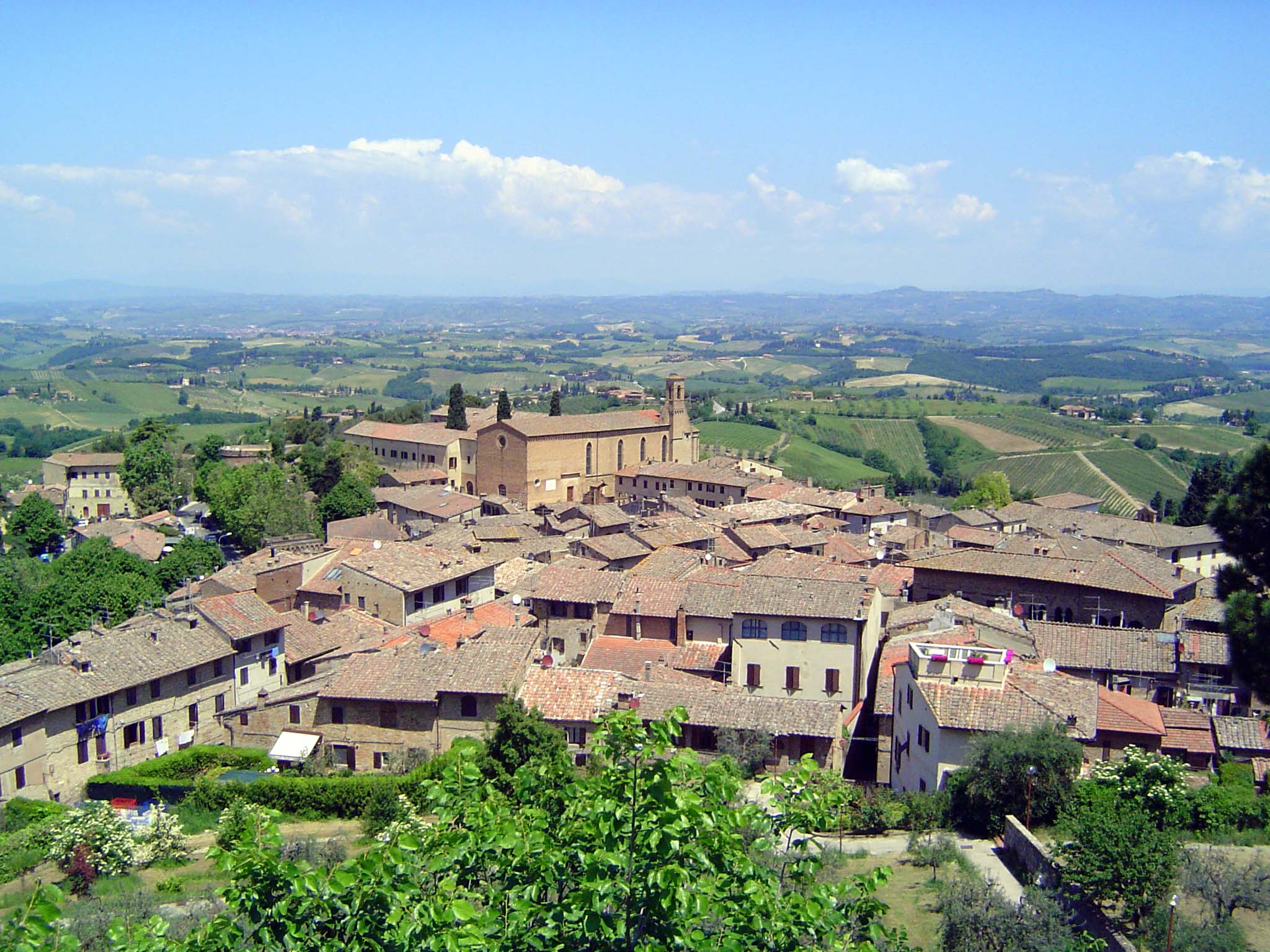
Twenty miles southwest of Florence, and twenty northwest of Siena, San Gemignano has 7,000 residents submerged in a tourist tide. The town is partly famous for being famous, but under that froth there's the peculiarity of its famous towers.
A pretty view, but no towers. No icons even, except perhaps the 13th century church of San Agostino. The view is north from La Rocca, once a fortress but since 1978 a park.
This is what we paid to see: the 13 surviving towers of an original 70. The tallest is the 54-meter Torre del Comune, finished in 1311. To its left is the tower of the cathedral, La Collegiata Behind it is the pyramidally topped Torre Rognosa or Torre dell'Orologio, atop the Palazzo del Podests. To its left are the twin Towers of the Salvucci. They appear truncated because in fact they were sawn off for violating a rule from 1255 that no tower could be higher than the Torre Rognosa.
Tourists and the Porta San Matteo.
Strolling on San Matteo.
Approaching the Torre Rognosa or Torre dell'Orologio.
The Torre del Comune, alternatively simply the Torre Grossa, finished in 1311. But why built at all? The reflex is to assume something about defensive measures, but the truth is more mundane. The town specialized in making saffron-colored cloth, most valuable in great lengths and prepared by drying in a dark, dust-free space. Imagine the interior of the towers full of dimly lit golden banners.
The Devil's Tower and Palace of Cortes. The external holes supported stairs or walkways, some linking towers to each other.
The brutally simple Torre dei Becci, from the Piazza dell Cisterna.
The Ardinghelli were arguably the town's leading family. The tower was originally twice this tall.
A thicket of towers dominated by the Salvucci twins and the Rognosa.